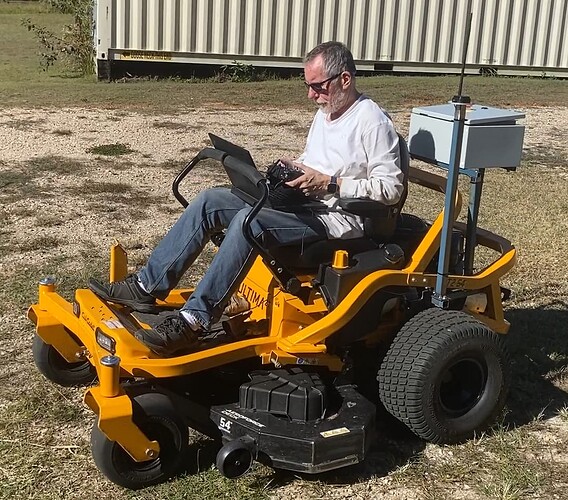Looks like it is not as easy as I thought ![]()
Thanks Steve and Yuri for the guidance.
Well, difficult for a newbie to understand what and what not to read or take with a grain of salt; though I understand things are progressing fast.
On one hand I try not to ask the silly questions, on the other hand documentation often does not keep up woth the lastest; hence, my list above, whihc I thoiught could summarise as a quick-start guide what to do.
In any case, I have just done the a round in front of the garage with remote control inputs to drive the mower.
[Me sitting on the mower with laptop and remote control.]
- Ensured the mechanical centre of the servo is the centre.
- I limited the servos’ travel to avoid these running into the physical limits of movement tolerated by the hydro-stat.
- Adjusted the linkages so that hydro-stats and servo centres match
- adjusted the trim in MissionPlanner
- put the hweel on and had a crack at it… works!

Yes, I am happy…
What I observed:
- the servos are mounted with the horn axle facing outward. This required to set the right servo to inverted in the servo software (not MP)
- driving forward, both linkages go backward (as they should)
- forward steering is correct too
- driving backward and steering behaves the opposite. (Turning the stick to the right results in the mower to go left.)
- steering in both directions is in principal aggressively fast.
I will now follow the documentation as pointed out.
As I can see, there is a setting for MOT_SPD_SCA_BASE which might help with this?!
On that note: throttle is smooth, while steering is darn fast; not sure why this is so by default.
Again, I appreciate any pointers and direction.
